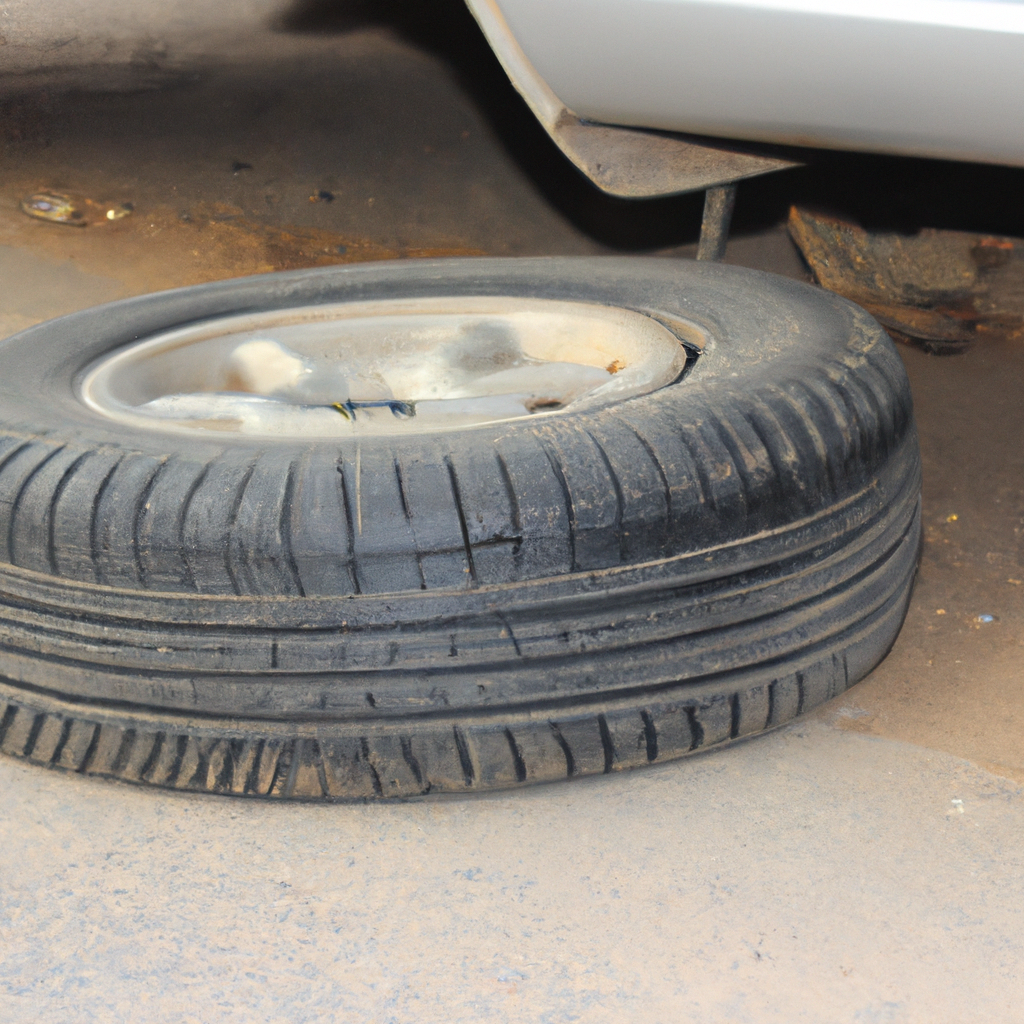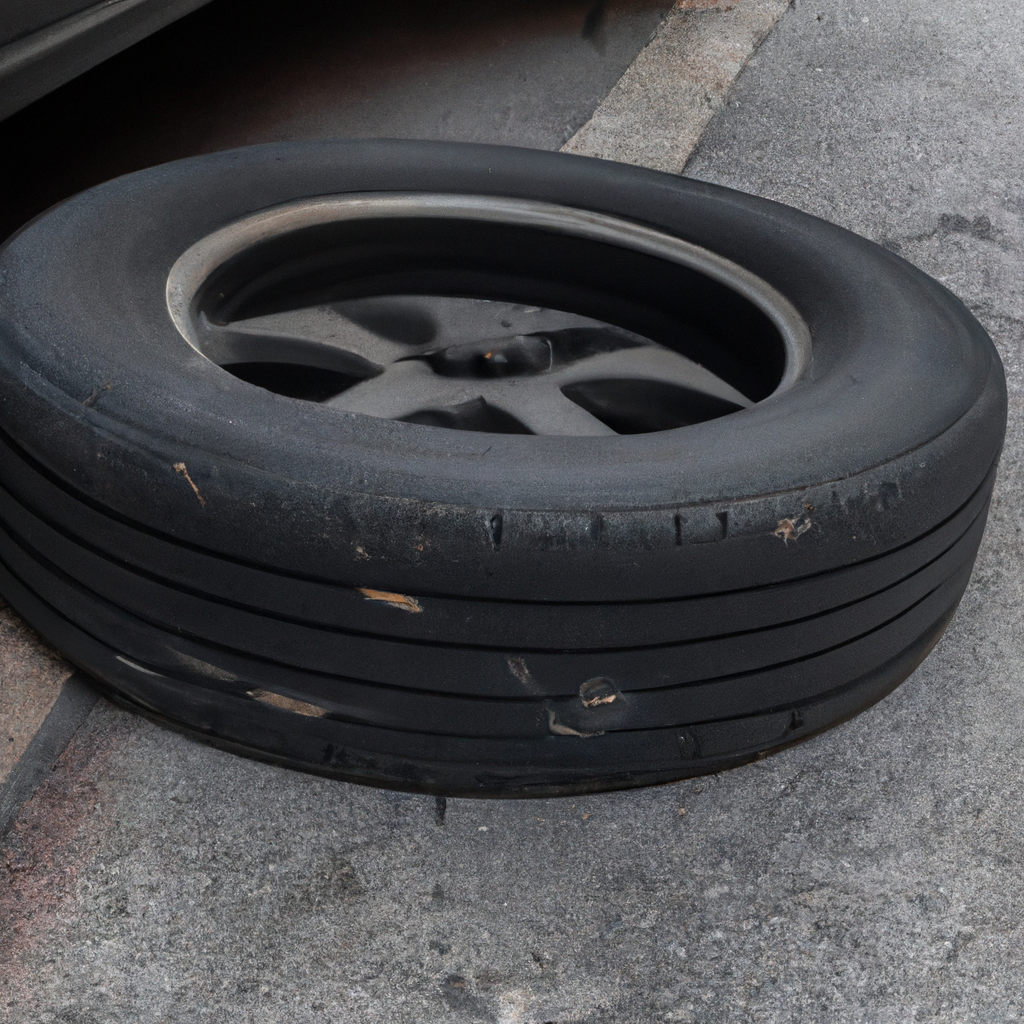Imagine a world where you never have to worry about getting a flat tire in the middle of nowhere or changing it on a busy highway. Thanks to the revolutionary invention of run-flat tires, this scenario is no longer a distant dream. These marvels of engineering not only provide convenience and peace of mind, but they also play a crucial role in enhancing vehicle safety. In this article, we will explore how run-flat tires contribute to keeping you safe on the road, and why they have become a popular choice among car owners worldwide. Buckle up and get ready to discover the fascinating world of run-flat tires!
Increased Control and Stability
Reduced risk of blowouts and flats
Run-flat tires are specifically designed to reduce the risk of blowouts and flats. Unlike traditional tires, run-flat tires are constructed with reinforced sidewalls that are able to support the weight of the vehicle even when the tire loses air pressure. This means that even if you experience a puncture or a significant decrease in tire pressure, you can still maintain control of your vehicle and continue driving safely.
Improved steering response
One of the main advantages of run-flat tires is their improved steering response. The reinforced sidewalls of these tires provide increased rigidity, allowing for more precise control of the vehicle during maneuvers. This enhanced steering response not only improves the overall driving experience, but it also contributes to better safety on the road by helping you navigate curves and obstacles more effectively.
Enhanced traction and grip
Run-flat tires offer superior traction and grip, thanks to their unique design. The reinforced sidewalls provide increased stability and ensure that the tire maintains optimal contact with the road surface. This enhanced traction not only improves the vehicle’s handling and performance but also enhances your safety by reducing the risk of skidding or losing control, particularly in adverse weather conditions.
Ability to Continue Driving
Extended mobility after tire damage
One of the most significant benefits of run-flat tires is the ability to continue driving even after experiencing tire damage. Traditional tires would typically require you to stop and change the flat tire, which can be time-consuming and potentially dangerous. With run-flat tires, you can continue driving for a certain distance, giving you the flexibility to reach a safe location or a nearby repair facility.
Avoidance of changing flat tires on the road
Changing a flat tire on the side of the road can be a hazardous task, exposing you to passing traffic and other potential dangers. Run-flat tires eliminate the need for immediate tire changes, reducing your exposure to unsafe conditions. Instead of relying on roadside assistance or attempting to change the tire yourself, you can safely drive to a repair facility at your convenience.
Safety in reaching a repair facility
In the event of tire damage, run-flat tires provide an additional layer of safety by allowing you to reach a repair facility without having to rely on immediate assistance. This is particularly important in remote areas or during late-night hours when there may be limited access to help. With run-flat tires, you can have peace of mind knowing that you can safely reach a repair facility without being stranded on the side of the road.

Reduced Risk of Accidents
Maintaining vehicle stability during tire failures
One of the most significant safety benefits of run-flat tires is their ability to maintain vehicle stability during tire failures. In the event of a sudden loss of air pressure or a blowout, run-flat tires allow you to safely maintain control of the vehicle, reducing the chances of veering off the road or colliding with other vehicles. This added stability gives you valuable time to react and make the necessary adjustments to keep yourself and others safe.
Prevention of sudden loss of control
Traditional flat tires can cause a sudden loss of control, resulting in accidents. Run-flat tires minimize the risk of sudden loss of control by allowing the vehicle to remain stable even when tire pressure is significantly reduced or lost completely. With run-flat tires, you can maintain better control over your vehicle, reducing the likelihood of accidents caused by sudden and unexpected tire failures.
Reduced likelihood of rollovers
Rollover accidents can be extremely dangerous, often resulting in severe injuries or fatalities. Run-flat tires contribute to reducing the likelihood of rollovers by enhancing vehicle stability. The reinforced sidewalls of run-flat tires ensure that the tire remains intact and securely attached to the wheel, minimizing the chances of a tire failure leading to a rollover incident. This added stability can provide you with greater confidence and peace of mind while driving.
Improved Braking Performance
Optimized braking distance and control
Run-flat tires contribute to improved braking performance by optimizing braking distance and control. These tires are designed to maintain their shape and stability even at reduced air pressure, allowing for consistent and effective braking capabilities. With run-flat tires, you can expect shorter braking distances, giving you more time to react in emergency situations and potentially avoiding collisions.
Enhanced ability to stop in emergency situations
In emergency situations where sudden braking is necessary, run-flat tires offer enhanced stopping power and control. The reinforced sidewalls of these tires ensure that the tires maintain optimal contact with the road surface, maximizing the effectiveness of the braking system. This enhanced ability to stop quickly and safely can be a crucial factor in preventing accidents and protecting yourself and your passengers.
Minimized risk of collision
Run-flat tires help minimize the risk of collision by improving the vehicle’s overall braking performance. With a reduced braking distance and enhanced control, run-flat tires give you the ability to react quickly to unexpected obstacles or hazards on the road. By reducing the risk of collision, run-flat tires contribute to a safer driving experience for both you and other road users.

Enhanced Load Carrying Capacity
Ability to support heavier vehicle weight
Run-flat tires have the advantage of being able to support heavier vehicle weight compared to traditional tires. This increased load carrying capacity makes run-flat tires an ideal choice for vehicles that frequently transport heavy cargo or have a higher passenger capacity. With run-flat tires, you can be confident that your vehicle can handle the added weight without compromising safety or performance.
Safer transportation of cargo and passengers
The enhanced load carrying capacity of run-flat tires contributes to safer transportation of cargo and passengers. Whether you’re carrying valuable goods or traveling with loved ones, run-flat tires provide the assurance that your vehicle can handle the load without experiencing tire failures or compromised stability. This increased safety ensures a smooth and secure journey, regardless of the weight being transported.
Reduced risk of tire overloading
Overloading a tire can have serious consequences, such as increased tire wear, reduced handling capabilities, and even tire blowouts. Run-flat tires help reduce the risk of tire overloading by providing a higher load index, which indicates the maximum weight capacity of the tire. By ensuring that your vehicle stays within the recommended load limit, run-flat tires contribute to a safer and more reliable driving experience.
Better Protection Against Punctures
Strengthened tire sidewalls
Run-flat tires are designed with strengthened sidewalls that provide increased resistance to punctures. The reinforced construction of these tires helps minimize the risk of punctures caused by nails, glass, or other sharp objects commonly found on the road. This added protection gives you peace of mind, knowing that your tires are more resilient and less prone to sudden punctures that can lead to dangerous situations.
Resistance to nails, glass, and other road debris
The ability of run-flat tires to resist punctures from nails, glass, and other road debris is a significant benefit in terms of safety. While traditional tires may be more susceptible to punctures that can result in immediate deflation, run-flat tires offer a higher level of protection. This means that if you encounter common road hazards, such as nails or broken glass, the chances of experiencing sudden tire deflation are significantly reduced.
Decreased likelihood of sudden deflation
Sudden tire deflation can be a hazardous situation, potentially leading to loss of control or accidents. Run-flat tires decrease the likelihood of sudden deflation by providing the ability to temporarily continue driving even after a puncture or loss of air pressure. This gives you the opportunity to safely reach a repair facility or a more convenient location, minimizing the risk of accidents caused by sudden and unexpected tire deflation.

Improved Driving Comfort
Reduced noise and vibration
Run-flat tires contribute to improved driving comfort by reducing noise and vibration. The reinforced sidewalls of these tires help absorb road irregularities and minimize the transfer of vibrations to the vehicle’s cabin, resulting in a smoother and quieter ride. Whether you’re commuting daily or embarking on a long road trip, the enhanced driving comfort provided by run-flat tires can make the journey more enjoyable and less fatiguing.
Enhanced ride comfort
In addition to reducing noise and vibration, run-flat tires also offer enhanced ride comfort. The reinforced sidewalls provide additional cushioning, resulting in a more comfortable and stable ride. With run-flat tires, you can experience improved handling and a smoother ride, even on uneven or rough road surfaces. This enhanced ride comfort not only adds to the overall driving experience but also contributes to reducing driver fatigue and promoting passenger comfort.
Maintained tire pressure levels
Run-flat tires help maintain optimal tire pressure levels for a longer period compared to traditional tires. This is due to their reinforced construction, which provides better air retention capabilities. By maintaining adequate tire pressure, run-flat tires ensure consistent performance and maximize fuel efficiency. Additionally, proper tire pressure reduces the risk of tire damage and improves overall safety on the road, making run-flat tires an excellent choice for those who prioritize driving comfort and safety.
Lowering Roadside Assistance Needs
Minimized need for immediate tire repairs
One of the advantages of run-flat tires is the minimized need for immediate tire repairs. Traditional flat tires often require immediate attention and repairs, leading to increased reliance on roadside assistance or tire repair services. With run-flat tires, you have the ability to continue driving for a certain distance, allowing you to reach a repair facility at your convenience. This minimizes the need for immediate tire repairs and provides a more flexible and convenient solution.
Reduced demand for towing services
Run-flat tires help reduce the demand for towing services, which can save you time, money, and inconvenience. In the event of tire damage, you can avoid the need for a tow truck by simply driving to a repair facility with run-flat tires. This not only eliminates the wait time for a tow truck but also eliminates the potential risks associated with being stranded on the side of the road. By reducing the demand for towing services, run-flat tires provide a more efficient and cost-effective solution for tire-related issues.
Savings in time, money, and inconvenience
The ability to continue driving with run-flat tires can result in significant savings in terms of time, money, and inconvenience. By eliminating the need for immediate tire changes or repairs, you can avoid delays caused by waiting for roadside assistance or finding a nearby repair facility. Additionally, run-flat tires can help you save money by reducing the frequency of tire replacements and the costs associated with towing services. This added convenience and cost savings make run-flat tires a practical and beneficial choice for vehicle owners.

Awareness of Tire Issues
Early warning indicators
Run-flat tires provide early warning indicators that help you stay informed about potential tire issues. Some run-flat tire systems are equipped with sensors that monitor tire pressure and can alert you if there is a significant drop or loss of pressure. These warning indicators allow you to take proactive measures and address any potential tire issues before they escalate into more significant problems, enhancing your safety and preventing unexpected tire failures on the road.
Tire pressure monitoring systems
Tire pressure monitoring systems (TPMS) are commonly integrated into run-flat tires, further enhancing your awareness of tire issues. TPMS continuously monitor the tire pressure and provide real-time information, often through a dashboard display or warning light. By keeping you informed about tire pressure levels, TPMS helps ensure that you can take timely action, such as adding air or seeking professional assistance, to maintain optimal tire performance and safety.
Immediate response to tire-related warnings
The immediate response to tire-related warnings is crucial for maintaining vehicle safety. Run-flat tires and accompanying tire pressure monitoring systems provide you with the necessary information to respond promptly to any tire issues. Whether it’s adding air to maintain optimal pressure or seeking professional help, the ability to address tire-related warnings immediately ensures that your vehicle remains in optimal condition, reducing the risk of accidents or tire failures.
Proper Maintenance and Considerations
Regular tire inspections and rotations
Proper maintenance is essential for the optimal performance and longevity of run-flat tires. Regular tire inspections allow you to identify any signs of wear, damage, or potential issues before they escalate. Additionally, rotating the tires periodically helps ensure even tire wear, contributing to better performance and safety. By incorporating regular tire inspections and rotations into your maintenance routine, you can maximize the benefits of run-flat tires and prolong their lifespan.
Equivalent replacement tires
When it comes to replacing run-flat tires, it is crucial to choose equivalent replacement tires. Run-flat tires have specific design features and construction that allow them to perform optimally in various safety aspects. Therefore, selecting replacement tires that match the original specifications and characteristics of the run-flat tires is essential for maintaining vehicle safety and performance. Always refer to the manufacturer’s guidelines and consult with a professional to ensure you choose the correct replacement tires for your vehicle.
Manufacturer guidelines and specifications
Following the manufacturer’s guidelines and specifications is vital to ensure the proper functioning and safety of run-flat tires. Each specific run-flat tire system may have different requirements or recommendations regarding tire pressure, maintenance intervals, and other factors that can affect performance and safety. By familiarizing yourself with the manufacturer’s guidelines and specifications, you can make informed decisions and perform necessary maintenance tasks that contribute to the longevity and optimal performance of your run-flat tires.


